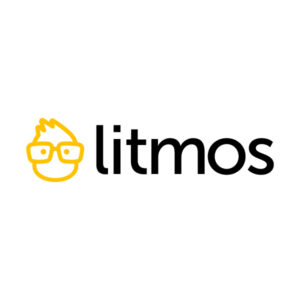Maximizing Learning And Engagement In The Workplace
Integrating learning into the daily flow of work is essential for maintaining a skilled and adaptable workforce. For L&D leaders and learning professionals, understanding learning in the flow of work (LIFOW) is paramount. This approach makes learning an integral part of an employee’s workplace tasks, empowering them to develop and refine their job skills in real time. This strategy not only improves productivity but also enhances the overall employee learning experience, which can improve employee satisfaction and retention. In this article, we will delve into how LIFOW maximizes productivity, boosts employee engagement, and reduces costs; we’ll also explore key strategies for learning leaders looking to integrate LIFOW into their L&D strategy.
Why Remote Workplaces Need LIFOW
For remote workers, LIFOW can be particularly transformative. By providing just-in-time support through performance tools like manuals, checklists, and infographics, remote employees can receive the necessary guidance to perform their tasks effectively. On-the-job mentoring can also be facilitated through virtual platforms, allowing remote workers to build relevant skills and receive guidance from experienced colleagues. This approach not only enhances job performance but also fosters a sense of connection and continuous growth, which is crucial in remote work environments.
Maximizing Productivity And Boosting Engagement
As L&D professionals, you know the impact that learning in the flow of work has on productivity. According to a recent Gartner report, LIFOW strategies can boost employee productivity by up to 25%. [1] Making training materials easy to find and available anytime, anywhere, can reduce the time it takes for employees to resolve a pressing issue, learn a necessary on-the-job skill, or review critical information before completing a task.
By integrating learning throughout the daily flow of work through microlearning, just-in-time training resources such as job aids and AI-powered LMS features, your organization can empower employees to learn what they need to complete their job-related tasks without making them take hours out of their work days. On-demand learning materials can also keep L&D budgets on track by reducing your organization’s investment in expensive and time-consuming live, in-person training sessions. For remote or hybrid workers with varying schedules and learning preferences, LIFOW ensures they’re continuously trained for their roles while staying aligned with your organization’s business and training goals.
LIFOW boosts employee engagement and satisfaction by catering to a diverse range of employee training needs. Josh Bersin’s research shows that this flexible approach to training can reduce stress and improve a sense of success on the job by 47% and 39%, respectively. [2] When employees feel supported in learning and growing, they’re more likely to be motivated and committed to their jobs. This leads to higher job satisfaction and better retention rates.
Reducing Training Costs Through Flexible Learning
The delivery method and format of LIFOW can make a valuable impact. When learners have multiple ways to access training, they are more likely to find what works for them, reducing the kind of time-consuming friction that learners face when trying to find training that isn’t accessible or relevant to their role or duties. Make sure that learners can engage with training in diverse and digestible learning formats such as video-based microlearning, podcasts, infographics, quizzes, and simulations, and make those modules easy to find by listing them in a centralized learning library.
Making learning convenient, easy to follow, and easy to find allows learning to fit around busy schedules (and not the other way around). This can make employee learning programs more enjoyable while reducing your company’s reliance on costly in-person training programs, making LIFOW a more cost-effective option. In the case of one real estate development firm, taking this flexible approach to training reduced L&D spend by 20%. [3]
Key Strategies For Integrating LIFOW
To effectively integrate LIFOW into the workplace, L&D leaders can adopt the following strategies:
- Make flexibility a design priority. It’s important to consider when, how, and where employees will access learning resources. Making training resources available in a variety of formats can increase accessibility to support just-in-time training.
- Foster a culture of continuous learning. Recognize and reward learning achievements, provide opportunities for knowledge sharing, and encourage managers to incorporate learning into team goals. A culture that values continuous learning can drive innovation and improve overall performance.
- Deliver learning on platforms employees already use. Leverage the channels and systems that employees use daily to ensure that learning resources are easily accessible. This could include integrating learning modules into existing communication platforms, such as email, chat applications, and project management tools.
- Measure and optimize learning initiatives. Establish clear KPIs and metrics to measure the impact of LIFOW programs. Track training completion rates, employee engagement, and the impact on job performance to continuously improve and refine learning initiatives.
Modern Workplaces Need LIFOW
The average employee only has 24 minutes a week to learn, according to research from Bersin, whose comprehensive timeline of the evolution of LIFOW shows how the rise of learning experience platforms and microlearning introduced a new paradigm in workforce learning: on-demand employee education. This shift underscores the importance of integrating learning into the flow of work to ensure that employees can access the necessary training and development opportunities within their limited available time.
Integrating LIFOW is a strategic approach that can significantly benefit both organizations and employees. By making learning an integral part of daily tasks, organizations can enhance productivity, reduce costs, and boost employee engagement and satisfaction. Embracing LIFOW requires a centralized Learning Management System that integrates seamlessly with your organization’s existing tech stack, ensuring that employees can access the necessary training and development opportunities without needing to sign out of work applications. Taking a flexible approach to training can lead to a more adaptable, skilled, and motivated workforce, ready to meet the challenges of the modern work environment.
References:
[1] How To Assess The Impact Of Learning In The Flow Of Work On Employee Productivity And Performance
[2] New Research Shows “Heavy Learners” More Confident, Successful, and Happy at Work
[3] Gables Residential sees success across the board with their training program

Litmos
Litmos develops learning solutions for top-performing companies and includes an AI-powered LMS, comprehensive content collections, and services to support success. 30 million people worldwide trust Litmos to train employees, customers, and partners.

